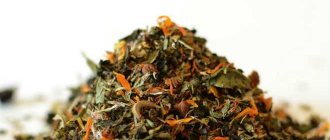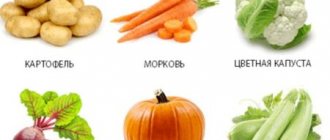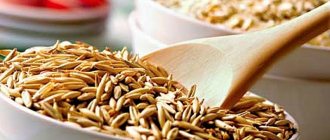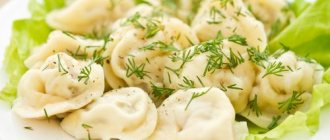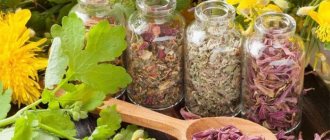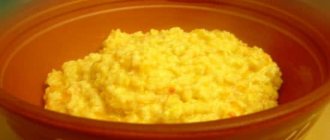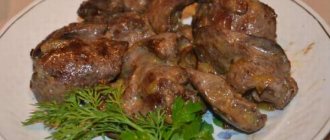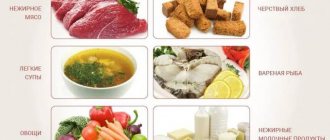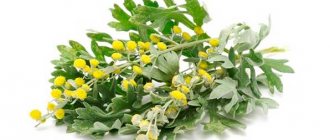Read more about chamomile and its remedies
Scientific medicine recognizes the antiseptic properties of chamomile, but is in no hurry to rely on it in severe cases. Whether chamomile can be used for cholecystitis and pancreatitis is a controversial issue. With a sluggish, uncomplicated inflammatory process in the pancreas and gall bladder, doctors usually do not object to weak decoctions and infusions, but have not developed a consensus on the benefits of chamomile in the acute phase of diseases.
Chamomile for pancreatitis can be used as a therapeutic and prophylactic agent. The flowers, stems and roots of the plant can be used to prepare teas, infusions and decoctions.
Chamomile-based drinks have the following healing effects: antiseptic, antibacterial, sedative, analgesic, antispasmodic, anti-inflammatory.
But if a person with pancreatitis has diarrhea or dysbiosis, chamomile can be harmful due to its laxative effect. You should not use chamomile for cholelithiasis - chamomile has a choleretic effect. Only a doctor can give final recommendations.
It is better to prepare medicinal products from chamomile purchased in pharmacies, in the form of filter bags or in dried form. Chamomile is brewed according to the included instructions. For self-collecting chamomile, the first half of summer is most favorable; the collected raw materials should be well dried in a ventilated place protected from the sun.
In the acute form of the disease, you can drink weak chamomile drinks (the raw materials taken are 2-3 times less than the recommendation), 2-3 times a day, 100 ml for 1-2 weeks. In the chronic stage, drinks are drunk in courses lasting 1 month. Drinks can be brewed with rose hips, St. John's wort, lemon balm or mint.
Who should not use chamomile?
Whether it is possible to drink chamomile for pancreatitis depends on the presence or absence of an allergic reaction or pronounced sensitivity to the components of the drug.
It should also be noted that laxative and choleretic effects may be undesirable in cases of diarrhea syndrome, dysbiosis or cholelithiasis.
Chamomile tea for pancreatitis will be the best start in treating the disease, since it has a lower concentration of substances found in the flowers of the plant compared to decoctions or infusions.
Start with weak and diluted decoctions, monitoring the body's reaction, and then introduce infusions and mixtures.
Before starting treatment of pancreatitis with the help of medicinal herbs, you should consult a specialist with the question: “Can chamomile be used for pancreatitis?” Only the attending physician will be able to prescribe the correct therapy with herbal remedies, individually selected for the patient, which in most cases is combined with drug treatment for greater effectiveness.
Chamomile-based preparations for pancreatitis of the pancreas
In addition to drug therapy, which cannot be carried out for a long time, herbal medicine is successfully used to treat diseases of the gastrointestinal tract.
To treat such a common disease as pancreatitis, chamomile teas, decoctions and infusions prepared according to certain recipes are used, each of which has healing properties and is recommended for use depending on the form of the disease.
It is convenient to use special filter bags with chamomile flowers, which are sold in pharmacies. They greatly simplify the process of preparing medicinal tea or decoction.
Beneficial qualities of chamomile
Many centuries ago, people noticed that chamomile has healing properties and began to use the flower to prepare medicines. The plant is rich in biologically active substances: essential oil, it is called chamomile; organic acids; flavonoids and others. Nowadays the miraculous flower is often used in medicine and cosmetology. Chamomile grows in temperate climates and is considered an affordable, inexpensive medicine.
The healing herb has anti-inflammatory, antimicrobial and regenerative properties. It perfectly regulates the functioning of the digestive organs. Chamomile helps remove intestinal gases and restores acidity. Thanks to a significant amount of antioxidants, the use of the plant helps slow down the development of the tumor process, prevents the formation of stones, and heals wounds and ulcers. The herb also has sedative and calming properties.
Due to its medicinal properties, the plant is effective in the treatment of pancreatitis and diseases of the gastrointestinal system. The use of the flower is useful for vascular spasms and varicose veins. Eating the herb will relieve fever, swelling, and cure a sore throat. It is recommended to drink chamomile for diabetes, depression and skin problems.
Chamomile flowers, stems and roots are used for medicinal purposes. For internal use, teas, decoctions or infusions are made from the plant. For pancreatitis, it is recommended to use weak teas and decoctions, which have a milder effect on the body than infusions. Due to the high content of the natural antihistamine apigenin in the plant, chamomile is hypoallergenic, therefore, recommended for each patient, including small children.
Beneficial properties of chamomile
So, many patients are interested in whether it is possible to drink chamomile for pancreatitis? The answer to the question is positive if the patient has no contraindications to use. The healing plant gives anti-inflammatory, antimicrobial and regenerating effects.
It normalizes the functioning of the digestive system, removes intestinal gases, and restores the acidity of gastric juice. Antioxidants present in the herb prevent malignant oncological processes in the body.
Chamomile has a positive effect on the central nervous system, perfectly calms, fights stress and neuroses. What are the medicinal properties and contraindications of chamomile for pancreatitis?
The benefits of chamomile for chronic inflammation of the pancreas:
- Decay and fermentation in the gastrointestinal tract are reduced - factors that often lead to increased gas formation and discomfort.
- Relieves spasmodic pain in the abdominal area.
- Helps accelerate the regeneration of damaged pancreatic cells due to chronic inflammation.
- Accelerates the healing of minor damage to the mucous membrane of the digestive organs.
- Improves the functioning of the digestive tract, as it enhances the secretion of gastric juice.
- Protects the mucous membranes of the digestive organs from the aggressive influence of food.
- Fights pathogenic microorganisms, which are often activated against the background of inflammatory processes in the digestive system.
- It has a moderate laxative effect, which prevents constipation.
The flowers, stems and roots of chamomile are used for medicinal purposes. Patients with pancreatitis are recommended to drink weakly concentrated tea and decoction.
Nature's natural anti-inflammatory
One of the most commonly used medicinal plants is chamomile. It is used in both official and folk medicine.
Infusions, decoctions and teas are prepared from the roots, leaves or flowers of the plant. It is used externally and internally both for the treatment of children and adults.
Most often, flowers are used to prepare medicinal compositions, since they contain many useful substances, essential oils and flavonoids, thanks to which the plant has anti-inflammatory and antiviral effects.
Chamomile is used for pancreatitis due to its medicinal properties:
- prevents gas formation;
- inhibits fermentation processes in the intestines;
- eliminates stomach cramps;
- has anti-inflammatory and antiseptic effects;
- promotes accelerated restoration of intestinal epithelial cells;
- has a moderate laxative effect;
- protects the gastrointestinal tract from the adverse effects of salty and spicy foods;
- activates the production of protective mucus with the help of tannins and mucous substances that make up the plant.
Chamomile for cholecystitis and pancreatitis has proven itself to be the best, since after taking it throughout the course of treatment, patients feel relief if the disease is chronic, and restoration of health and strength of the body after acute attacks of the disease.
Impact on pancreatitis
Of all parts of the plant, it is advisable to use only flowers in the treatment of various diseases. They contain a high concentration of useful substances. The content of a large amount of essential oils provides an antiseptic and antibacterial effect.
Due to the presence of chamazulene, chamomile has anti-inflammatory and anti-allergic properties. This compound speeds up cell healing and repair.
The antispasmodic effect is achieved due to the presence of glucoside, quercimeritrin, and coumarins, which are found in large quantities in the plant.
The plant contains acids:
- Nicotine helps in restoring metabolism.
- Salicylic acid carries out an anti-inflammatory process.
- Ascorbic acid is a natural antioxidant and is involved in restoring the body's defense reactions.
Due to the presence of glycerides, use in moderate quantities for cholecystitis and pancreatitis promotes a choleretic effect, which reduces the load on the inflamed organs.
Useful properties and contraindications for use
The following medicinal properties of chamomile are useful for pancreatitis:
- antibacterial and antiseptic;
- painkillers and sedatives;
- antispasmodic;
- anti-inflammatory.
Medicines prepared from chamomile can protect the gastrointestinal tract from the negative effects of food intake. Chamomile infusions and decoctions help improve the functioning of the digestive system.
But this medicinal plant can be harmful to those patients who have diarrhea or dysbiosis, since chamomile has a laxative effect. It is not recommended to take chamomile-based decoctions and infusions for people suffering from cholelithiasis, since the plant has a choleretic effect.
Those who have an individual intolerance to the plant should not take products made from chamomile.
Beneficial features
When drawing up a treatment protocol for the pancreas, specialists always include herbal remedies prepared from medicinal herbs. At the same time, the attending physician always takes into account whether or not a decoction from a certain herbal collection can be consumed by a particular patient due to his individual physiological characteristics. Most often, chamomile is included in a therapeutic course designed to cope with inflammatory problems of the pancreas.
It is not for nothing that it bears such a name. Since ancient times, it has been known that its flowers have unique medicinal properties, allowing them to be used in the treatment of various diseases of both adults and children.
The use of chamomile for pancreatitis has an antiviral and anti-inflammatory effect on the digestive organ damaged by the inflammatory process due to its high content of flavonoids and essential oils.
Among the beneficial effects that chamomile decoction has are the following:
- a tincture prepared from these medicinal flowers accelerates the regeneration of cells in the damaged pancreas;
- if you regularly use chamomile decoction, the inflammatory process occurring in the digestive organs subsides very quickly;
- this plant has antispasmodic properties, which eliminate cramping pain localized in the abdominal area;
- All products prepared from chamomile contain mucous and tannin substances that can effectively protect against the aggressive effects of acidic gastric juice and the food bolus passing through it.
All these healing properties of the plant have long been recognized by traditional medicine and are widely used in it.
Before you start using pharmaceutical chamomile for medicinal or prophylactic purposes, you should consult a specialist, since the plant has some minor contraindications.
How to choose the right raw materials
For pancreatitis, it is better to use chamomile, available in pharmacies. The raw materials are sold there in dried form, ready for use. These can be either filter bags (which is most convenient for use) or dried grass. The price of the plant in pharmacies is affordable to almost everyone.
If you want to prepare the raw materials yourself, then you should know that the most favorable time for collecting pharmaceutical chamomile is the first half of summer. In the first summer months, the plant is richest in nutrients. Drying of raw materials is carried out in a well-ventilated place, protected from direct sunlight.
Chamomile for pancreatitis: pros and cons
In chronic uncomplicated pancreatitis, chamomile plays the role of a complementary agent, providing a mild analgesic, antiseptic, wound-healing and carminative effect. On the other hand, the choleretic properties of the plant can provoke a relapse of the disease. A sharp release of bile leads to premature activation of pancreatic enzymes, so chamomile is prescribed in moderate doses for chronic recurrent pancreatitis.
With pancreatitis, it is often necessary to treat at the same time concomitant pathologies of the gastrointestinal tract - gastritis, gastroduodenitis, gastroenterocolitis, peptic ulcer, cholecystitis and liver steatosis. Chamomile is especially effective for gastritis: active phytocomponents normalize the secretory function of the gastric mucosa, and plant mucus protects the internal walls of the gastrointestinal tract from the corrosive effects of gastric juice and proteolytic enzymes.
Whether chamomile is beneficial for acute pancreatitis is an open question. WHO advises avoiding herbal treatment until remission occurs, but not earlier than 10-15 days after the attack. In the absence of purulent-septic complications and severe diarrhea, it is permissible to drink diluted chamomile tea, decoction or infusion.
Therapy of chronic pancreatitis and cholecystitis
Sugar level
Man
Woman
Enter your sugar or select your gender to get recommendations
Treatment of cholecystitis and pancreatitis with folk remedies is carried out with the permission of the treating doctor in order to eliminate a “conflict” between drugs and medicinal plants.
Pharmaceutical chamomile helps reduce inflammation and relieves spasms. It is added to various fees. You can also make chamomile tea or infusion. Add 1 tablespoon of dried component to 250 ml of boiling water. Drink warm in one sitting. The course of treatment is at least 2 months.
Plantain has an anti-inflammatory effect, will relieve duodenitis (inflammation of the mucous membrane of the duodenum), and reduce the level of bad cholesterol - a factor in the formation of gallstones. You can add the seeds of the plant to your food.
Prepare a decoction based on the leaves: take 2 tablespoons of dry ingredients, add 300 ml of water, leave for 24 hours. Divide the portion into three doses, drink before meals. The duration of therapy is three weeks, break, repeat.
Folk remedies for pancreatitis and cholecystitis (recipes and methods of use):
- Add 10 g of corn silk to 250 ml of boiling water. Leave for one hour, take a quarter glass. The full therapeutic course is 2 months.
- An effective collection includes the following ingredients: peppermint, cudweed, St. John's wort, coriander, elecampane root and dill seeds - in equal proportions. Pour 1 tablespoon into 250 ml of hot water, leave for an hour. Take a quarter glass 4 times a day. The course of therapy is 1 month.
- Flax is a unique plant that has choleretic properties, improves intestinal motility, and stimulates the functioning of the immune system. An aqueous decoction is prepared on its basis. To prepare, take a tablespoon of seeds and 200 ml of water. Simmer over low heat for 15 minutes. Leave for an hour. Take only fresh, 100 ml twice a day. The course of therapy lasts two months. In case of reactive pancreatitis, flax should be used with caution.
- Herbal decoction of milk thistle has an anti-inflammatory effect. Add crushed leaves of the plant (20 g) to 500 ml of water and brew for 2 hours. Take 50 ml 3 times a day before meals. Reviews show that the product helps cure the pancreas and gall bladder.
The use of chicory has a positive effect on the functionality of the liver, pancreas and gall bladder. At home, decoctions and tinctures are taken with the addition of inflorescences, roots or seeds of the plant. Fresh juice has a choleretic effect.
In the calculous form of cholecystitis, treatment with chicory can lead to the movement of stones, so herbal medicine must be agreed upon with the attending physician.
How to brew chamomile for pancreatitis
During remission of chronic uncomplicated pancreatitis, it is allowed to take diluted chamomile tea, herbal infusions and decoctions of moderate strength. The generally accepted dosages of phytomaterial are reduced by 2–3 times or the drink is diluted with water in a 1:1 ratio. If chamomile is well tolerated, the concentration of phyto-raw materials is adjusted to the usual dosage.
A chamomile decoction for pancreatitis is prepared from 1-2 teaspoons of phytomaterial per 200-250 ml of heated water. Flower baskets, filled with water, are boiled in a water bath for up to 20 minutes and allowed to brew for about an hour, wrapped in a towel. Then the liquid is decanted and another glass of water is added.
For bloating and flatulence, a pancreatic mixture of fennel, chamomile and immortelle seeds is brewed in the same way. Dry phyto-raw materials are mixed in equal proportions - a dessert spoon for each phyto-ingredient and poured with a liter of hot water.
For infusion, take a large spoonful of chamomile inflorescences in half a liter of boiling water, leave for at least an hour, then drain and strain the liquid. Decoctions and infusions are drunk warmed three times a day, 50 ml after meals; If the drink seems bitter or tart, you can add honey.
To brew tea, pour half a dessert spoon of flower heads with a glass of boiling water and leave under a tightly slammed lid for a quarter of an hour. It is advisable to drink freshly brewed tea in 3-4 doses - no more than a third of a cup at a time. The course lasts up to 40 days, after which a break of 10–20 days is required.
Treatment of pancreatitis at home with folk remedies
Olga Natolina
Treatment of pancreatitis with folk remedies.
Poor nutrition, overeating, the habit of eating fast food, and an unhealthy lifestyle are the main causes of gastrointestinal diseases in modern society. Nowadays, the number of patients with such problems is inexorably growing. For example, every tenth man and every fifth woman suffers from pancreatitis. Even young patients are not immune from this disease.
It is this disease that we will talk about today, or more precisely, about the methods of traditional therapy. But before discussing the effectiveness of this kind of medicine, let us remember what pancreatitis is.
The pancreas is the largest organ of the digestive system, the functioning of which determines the production of enzymes that affect not only the digestion process, but also the activity of the body as a whole. There are many diseases that interfere with its functioning. If treatment is not started in time, pancreatitis will eventually develop and inflammation in the gland tissues will worsen.
Depending on the severity of the disease, it can be acute or chronic. In the first case, inflammation develops rapidly and can even threaten the patient’s life.
Among the main causes of its occurrence are poisoning, alcohol abuse, and bad eating habits.
The chronic form is characterized by gradual development associated with a complex disruption of the functioning of the gastrointestinal tract. This is a slowly progressive inflammation that occurs periodically.
When the inflammatory process becomes chronic, the following symptoms are observed: pain, stool upset, vomiting, nausea, general weakness, weight loss, etc.
Basically, the chronic form is a consequence of incompletely cured acute pancreatitis.
Traditional therapy has been famous for its effectiveness for many centuries. With the help of natural medicines, a person can cure many ailments, including gastrointestinal diseases.
their task in treating inflammation of the pancreas is to cleanse toxins and cholesterol plaques. But it’s immediately worth noting that the result of therapy largely depends on adjustments in nutrition and eating patterns.
For diseases of the pancreas, it is important to follow a diet that excludes sweet, fatty, spicy, fried, smoked foods, as well as alcoholic beverages and smoking. In general, the patient’s menu should be balanced and moderate, but overeating during the treatment period is strictly prohibited. Also try to drink as much fluid as possible.
Now let's discuss what recipes help with pancreatitis:
- Herbal infusion. Mix a tablespoon of chamomile and sandy tsmin (immortelle), pour 250 ml of boiling water over the herbal mixture and leave for half an hour. The strained infusion is taken 120 ml three times a day half an hour before meals. On average, the therapeutic course lasts from 14 to 21 days.
- Oatmeal infusion. Pour half a kilogram of whole grains with a liter of boiling water and leave to steep for about 40 minutes. Take the prepared medicine three times a day.
A piece of fabric soaked in a fermented milk product is applied to the left side and the stomach area, covered with plastic wrap, insulated with a warm scarf or scarf and left overnight.
This treatment method is especially effective for acute attacks of pancreatitis. The therapeutic bandage perfectly relieves inflammation and pain.
The procedure must be carried out daily for 4-6 weeks.
Using a meat grinder, grind a kilogram of unpeeled citrus fruits, herbs and garlic (300 g of each ingredient). Transfer the resulting mixture into a glass container and place it in the refrigerator for storage. You need to take the drug three times a day, a teaspoon 15 minutes before meals.
But traditional healers recommend drinking the medicine with a herbal infusion (1/4 cup) based on lingonberries, blueberry leaves, green beans, and corn silk.
Healthy oats
Oats are often used for diseases of the gastrointestinal tract and pancreas. Its effectiveness is due to its beneficial composition. It contains vitamins, minerals, starch. There are many recipes based on this component. The following are especially popular:
- For inflammation of the pancreas, oatmeal porridge is especially useful. Dishes are prepared using water, without adding salt or oil.
- Milk oats. Thoroughly washed whole grains (100 g), pour 1.5 liters of water and cook over low heat for 60 minutes. After the mixture has cooled (40 minutes), use a masher to mash the cooked cereal and cook for another 20 minutes. After this, strain the cooled oat milk (it is advisable to use nylon for this) and put it in the refrigerator for storage. Take the medicine 3-4 times a day before meals, 1/cup.
Buckwheat kefir
Pour 20 g of buckwheat flour (if you don’t have it, you can use buckwheat crushed in a coffee grinder) with a glass of kefir in the evening, and eat it for breakfast in the morning.
Is it possible to drink
Medicinal teas with chamomile, decoctions and infusions can be drunk for pancreatitis. Flowers, roots and stems of the plant are used to prepare them. Depending on the form of the disease, different types of drinks are prepared.
If a patient regularly takes chamomile-based remedies, then mucus is formed in the pancreas, which protects the organ from the penetration of hydrochloric acid produced by the stomach.
Medicinal drinks relieve inflammation of the gland, relieve unpleasant manifestations of pathology - fermentation processes and spasms.
In acute form
In case of acute pancreatitis, it is allowed to drink weakly brewed chamomile teas. You can prepare weak infusions of medicinal plants. It is recommended to take drinks 2-3 times a day. A single dose should not exceed 100 ml. The therapeutic course lasts 1-2 weeks.
In the chronic stage
In chronic pancreatitis, chamomile tea can be drunk in courses lasting 1 month. The drink should be brewed according to the instructions included with the medicinal composition.
Cholecystopancreatitis
In this case, chamomile-based medicines help eliminate spasms, get rid of bile stagnation, and relieve inflammation.
For cholecystopancreatitis, you can prepare a drink according to the following recipe:
- mix dill (3 parts), hawthorn (2 parts), chamomile (1 part);
- 1 tbsp. l. pour 300 ml of boiling water over the prepared mixture and leave for 1 hour;
- filter;
- drink 1/3 glass 3 times a day for 4 weeks.
During exacerbation of the disease
If chronic pancreatitis has worsened, then medicinal chamomile drinks are allowed to be consumed only in the form of weak teas and infusions.
For pancreatitis and gastritis
When two pathologies of the digestive system are combined, a medicinal infusion can be prepared according to the following recipe:
- 1 tbsp. l. dry chamomile leaves and flowers pour 1 cup of boiling water;
- leave the mixture for 3 hours;
- strain the mixture;
- drink half a glass warm 3 times a day between meals.
Reviews
Irina Sergienko, 57 years old, Tomsk: “I periodically drink chamomile tea, because the doctor recommended it. I don't see any effect. I don’t think that it will be possible to get rid of the disease only with the help of medicinal herbs and the substances contained in it. It is necessary to take medications, and plants can only be an addition to them.”
We recommend reading: Treatment of pancreatitis with buckwheat and kefir
Natalya Nikitina, 38 years old, Krasnoyarsk: “I’ve been drinking chamomile for many years in different forms - tea, decoction, infusion. It helps relieve pain from inflammation of the pancreas, but the taste of the grass sometimes gets boring. I try to diversify with other herbs. It’s still better than constantly taking pills that are undesirable for the digestive system.”
Tatyana Kuzmenko, 39 years old, Tambov: “Pancreatitis was diagnosed six months ago. Until time is lost, I try to adhere to all the doctor’s recommendations: I follow a diet and drink herbal infusions, including chamomile tea. I buy herbal teas with chamomile at the pharmacy. I understand that the disease cannot be cured with herbs alone, but it is possible to support the gland.”
The use of chamomile for the treatment of acute inflammation
Acute pancreatitis occurs when bile enters the pancreatic ducts. As a result of the reactions, enzymes that are in an inactive state are activated and interact with bile. These enzymes are aggressive towards the pancreas and cause inflammation of the organ. In an acute condition, after eating, strong unbearable cramps occur in the upper abdomen, accompanied by nausea, vomiting and bowel disorders.
In such cases, it is allowed to take weak chamomile teas or weak herbal infusions. It is recommended to consume drinks in 2-3 doses during the day only after meals at a dosage not exceeding 100 ml per dose. The duration of treatment is 7-14 days.
The use of chamomile for the treatment of chronic pancreatitis
In the chronic stage of pancreatitis, the ability of the pancreas to produce digestive enzymes in sufficient quantities disappears. The disease is often preceded by acute inflammation of the pancreas. Sometimes there are no symptoms in the initial stage. As a rule, the disease is characterized by periodic pain in the abdomen, weight loss, foul-smelling stools, weakness, and loss of appetite.
During exacerbation of the chronic stage of the disease, it is allowed to take weak teas and infusions. After entering the remission stage, you can use chamomile tea, brewed according to the instructions. The course of treatment is 30 days. After a break, treatment is allowed to be repeated.
Reviews from doctors
Chamomile decoctions and infusions are drunk as additional therapy to create a mild choleretic effect. If symptoms worsen, it is recommended to follow diet therapy and take medications. It is better to drink herbal infusions during periods of remission only in the chronic form of the disease. Chamomile tones and calms the patient, reduces the risk of developing diabetes.
Mikhail, gastroenterologist, Moscow
I don’t think that chamomile helps much with inflammation of the pancreas. It has a slight tonic and general strengthening effect, a person receives vitamins and acids. But I am inclined to think that in practice it is better to take medications, especially for acute pancreatitis. Herbal infusions do not help reduce amylase and lipase levels, they only speed up metabolism.
Recipes with chamomile for pancreatitis
Traditional medicine suggests consuming chamomile in the form of tea, decoction or infusion.
Tea
The process of making tea is simple. 1 filter bag should be filled with 1 glass of boiling water and left for 15 minutes. The glass must be closed with a lid. The filter bag can be replaced with 2 tsp. dried chamomile flowers.
You should drink tea 2-3 times a day after meals. The initial single dose is ¼ cup. Gradually it can be increased to ½ cup. Chamomile tea can be sweetened with a small amount of natural honey.
A healing chamomile drink can be brewed with other medicinal plants. For example, rose hips and propolis help to quickly cope with pain during pancreatitis. It is useful to add St. John's wort, mint, and lemon balm. But it is better to consult with your doctor which tea composition will be most suitable for the treatment of pancreatitis.
Decoction
To prepare the decoction, you need to pour 2 tbsp into a glass or ceramic mug. l. dry chamomile and pour 1 cup of boiling water over it. Place the container in a steam bath for 15 minutes, then leave for 1 hour and strain. Add boiled water to the prepared decoction to a volume of 200 ml. The product is taken 1/3 cup 3 times a day after breakfast, lunch and dinner. The therapeutic course lasts 2-4 weeks.
The effect of the drink may be too strong during the acute course of the disease or at the beginning of the course of therapy.
In these cases, it is recommended to make the decoction less strong, for which less dry raw material is taken - 2-3 times.
Infusion
To prepare the tincture, add 1 tbsp. l. dry raw materials into a thermos, pour 200 ml of boiling water and leave for about 1 hour. The finished tincture is filtered and taken after meals, 1/3 cup.
Methods of application
Depending on the form of pancreatic disease, chamomile infusions are used in different ways.
The use of chamomile-based products promotes faster recovery in the acute stage of pancreatitis. The infusion is consumed only in diluted and not concentrated form due to the presence of a large amount of acids contained, which can irritate the gastric mucosa, as well as due to the laxative effect.
In the chronic form, the beneficial properties of chamomile help prolong the remission stage. Modern medicine uses medicines based on active chamomile preparations. The use of such products will replace chemical medications.
A decoction for pancreatitis is the most common after taking medications that are not recommended for long-term use.
When choosing a drink, preference is given to chamomile teas using filter bags. It's not easy to access, but it's also fast. To prepare the tea, follow the instructions on the package.
Tinctures are not recommended for acute forms of pancreatitis. However, during stable remission, it is possible to use one tablespoon 2 times a day. The tincture should be taken after meals.
Decoction recipes
Chamomile tea for pancreatitis will bring the greatest benefit if you add other herbs: immortelle, mint, lemon balm. At the onset of the disease, it is necessary to use less strong infusions. A variety of preparations of medicinal herbal recipes are individualized and carried out in agreement with the doctor’s prescriptions, which is associated with the characteristics of the course and form of pancreatitis.
A generally accepted recipe for a decoction for the treatment of pancreatitis: take a teaspoon of dried chamomile flowers, add 200 ml of boiling water and leave for 10-15 minutes. Heat the broth in a water bath.
How to make chamomile tea to treat pancreatitis
For pancreatitis, it is recommended to take chamomile in the form of tea. For preparation, it is advisable to use a collection of factory-packaged dried flowers, sold in pharmacies. To simplify the drink preparation technology, it is possible to use filter bags. You can prepare raw materials for tea yourself. It is better to use plants collected in June and early July, when they contain a lot of chamomile oil.
Chamomile tea is prepared according to the recipe: first you need to pour a teaspoon of dried flowers or a filter bag with hot water in a volume of 200 ml, hold it under the lid for 5-10 minutes. The liquid is filtered through gauze folded several times. It is possible to add a little sugar or honey to chamomile tea. Take within an hour after meals, preferably warm.
To get rid of the specific taste of chamomile, mint and lemon zest are added to the drink, which will not affect the healing properties. For flatulence, add dill seeds. To maximize the beneficial properties of tea, it is recommended to take it fresh. After time, the drink becomes unsuitable for internal consumption.
Contraindications for the use of chamomile tea
Chamomile tea and other herbal remedies alleviate the patient's condition with pancreatitis and have a beneficial effect on the entire human body. However, the plant has contraindications:
- allergic reaction to chamomile in some patients;
- cholelithiasis;
- diarrhea, intestinal dysbiosis;
- pregnancy;
- liver diseases;
- low pressure.
Chamomile preparations, if taken according to the instructions, do not have any side effects. In case of an overdose of the permissible volume or concentration, unpleasant consequences are possible: headache, diarrhea, depression, nausea, vomiting. It is also possible to reduce the patient's blood pressure and tone.
Methods of administration
For a pathological process in the pancreas, the following folk remedies are prepared from chamomile:
- Infusion. 1 tbsp. l. dry collection, pour 250 ml of hot water, leave for 20 minutes. The resulting composition is filtered and drunk 150 ml 4 times a day during snacks after breakfast or lunch.
- Tea for regular use. Chamomile is crushed with a knife or in a mortar. The resulting mass is used as tea leaves. 2 tbsp. l. tea is brewed with 750 ml of boiling water. The finished composition is drunk between meals with the addition of 1 tsp. honey Tea is included in the diet for 2 months, after which a break is taken for 2 weeks.
- Herbal decoction. In addition to dried chamomile inflorescences, dill leaves and dried flowers are needed. Herbs are mixed in equal proportions. 1 tsp. dry collection is poured with 500 ml of hot water and boiled for half an hour in a water bath. After 30 minutes, cool the broth and drink 0.25 tbsp. l. after meal.
Interaction of chamomile preparations with other drugs
When treating pancreatitis and related diseases, the patient takes chemical medications. When treating with chamomile tea, take into account the nuances of the interaction of the drink with medications.
You should not drink chamomile tea at the same time as taking the following medications:
- reducing blood clotting;
- diuretics;
- medications that have a sedative effect;
- drugs that lower blood pressure.
This is because chamomile has similar properties to these medications. In case of simultaneous use, a significant overdose of drugs can be caused.
It should be noted that chamomile for pancreatitis has a beneficial effect on the pancreas, gastrointestinal tract and other body systems. The most suitable form of taking this herb for pancreatitis is chamomile tea. In order to avoid side effects, you must strictly adhere to the dosage regimen agreed with your doctor. You should also carefully consider possible contraindications. Due to its hypoallergenic properties, this medicinal plant is even used to treat children.
Mint and chamomile tea recipes
Is it possible to drink chamomile or mint tea for chronic pancreatitis? It is allowed to use these medicinal herbs if the patient does not have allergic reactions or individual intolerance. But even in this case, it is necessary to consult with your doctor just in case.
Most traditional methods of treating inflammation of the pancreas are given to teas. It’s easy enough to brew them at home, without any skills or equipment, the main thing is to stick to the recipe.
To prepare decoctions, take dried wild chamomile flowers and peppermint or longleaf leaves. They can be brewed either individually or combined. The herbs have a fairly pleasant taste and smell, so there should be no problems with consumption.
Chamomile tea
To prepare chamomile tea, take a tablespoon of the prepared raw material and pour a liter of boiling water into an enamel pan. The container is left warm for several hours. You need to drink it on an empty stomach before meals 3 times a day, a third of a glass.
You can add a pinch of St. John's wort, mint, violet or linden to chamomile. Then the drink will be more aromatic and healthy. Sugar or honey is not recommended to be added to the broth.
Mint tea
Mint brews faster than chamomile, so it can be prepared immediately before use. Throw a few leaves of aromatic herbs onto a glass of boiling water and cover the cup with a saucer for 10–15 minutes. This drink has a refreshing taste and will appeal to many. St. John's wort, motherwort, and lemon balm are often added to mint.
The benefits of this type of tea will only be if traditional medicine is combined with a healthy diet and a complete rejection of bad habits.
For diseases that develop in the pancreas and are inflammatory in nature, taking medications alone is not enough. All therapeutic measures must be carried out against the background of a special diet; in addition, patients are prescribed infusions and decoctions of medicinal herbs, prepared according to traditional medicine recipes, as auxiliary agents. Chamomile is used for pancreatitis, probably more often than other medicinal plants. It has not earned its popularity in the treatment of this disease in vain. Thanks to teas and decoctions prepared from medicinal flowers, the inflammatory process that affects the digestive organs stops faster and recovery occurs.
Where can I get chamomile for tea?
The easiest way is to buy dried chamomile at your nearest pharmacy. Purchase pharmaceutical chamomile in filter bags sold by pharmacies. Such raw materials are of high quality and tested in production. The flowers are sold loose in packs, or crushed in bags convenient for quick brewing. Another option is a market where old herbalists sell a wide variety of plant materials.
But it’s better, of course, to find time on one of the summer days, make a trip into the forest with the whole family and pick daisies and other useful herbs with your own hands. This way you will be confident in the quality and hygienic cleanliness of the collected flowers. After all, you will definitely choose a meadow for this as far as possible from highways.
The main thing is not to confuse pharmaceutical chamomile with other types of this plant. The drugstore one has small white petals and a convex core, and the leaves look like dill. It should be harvested at the height of flowering, when the petals are in a strictly horizontal position, and the flowers should be dried in a ventilated place, protected from direct sunlight, in a thin layer, stirring regularly.
